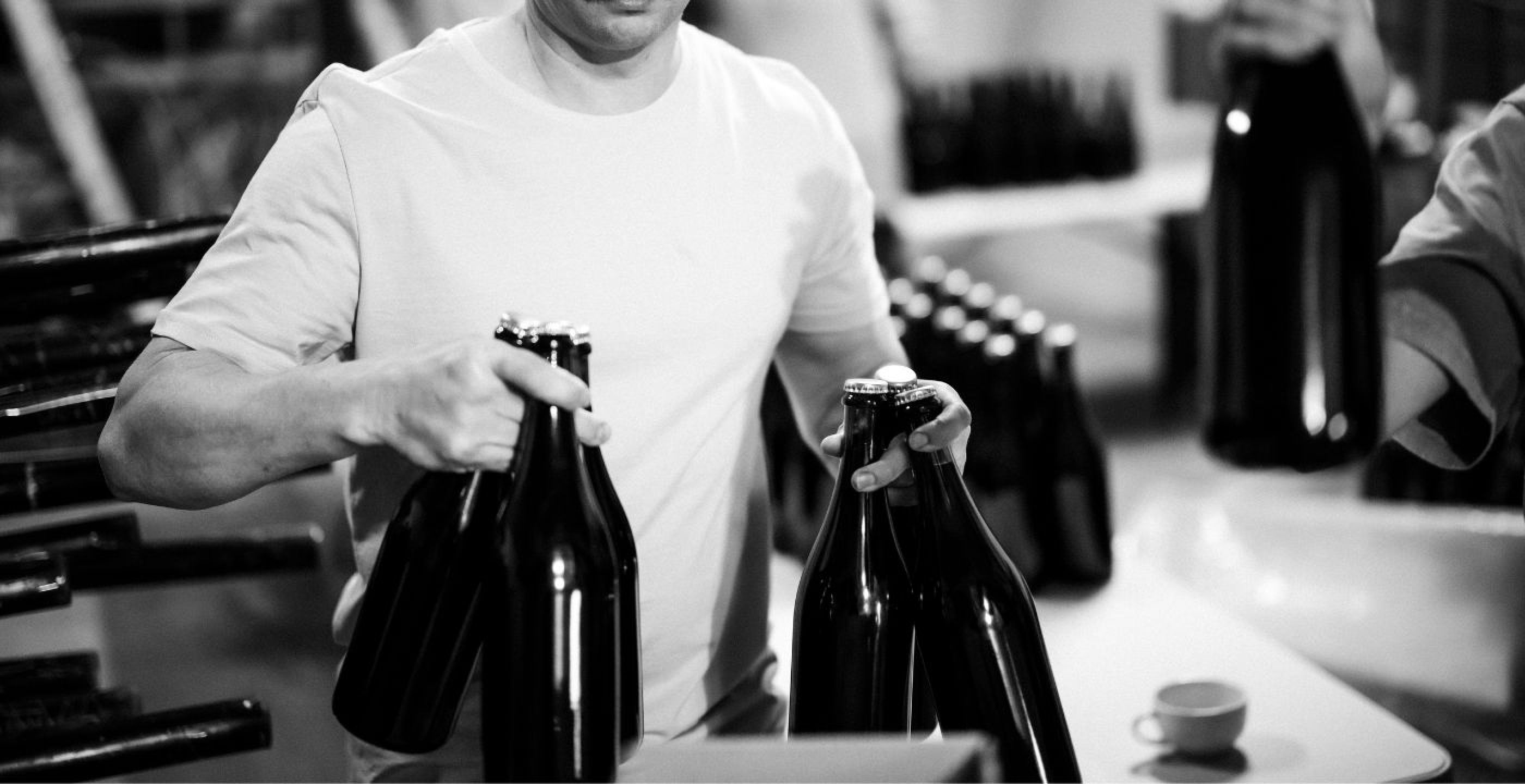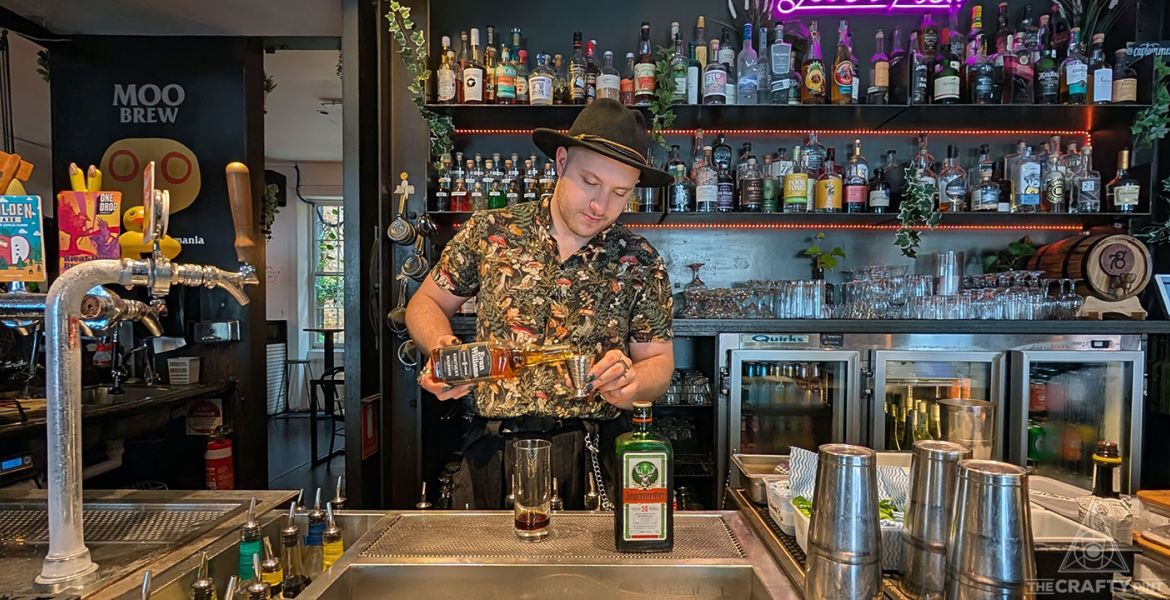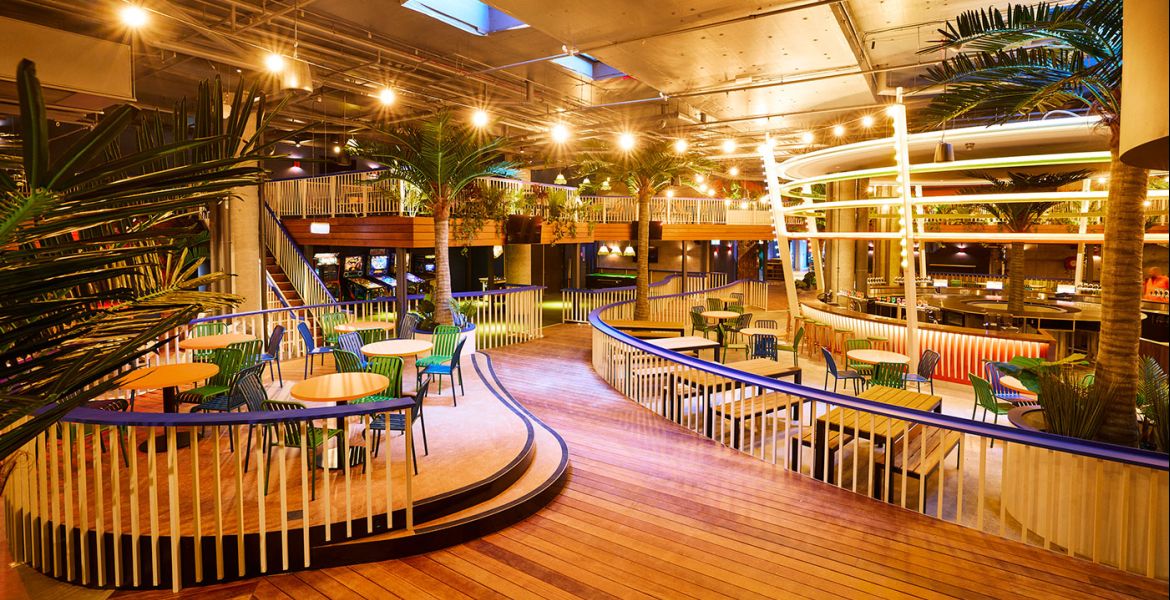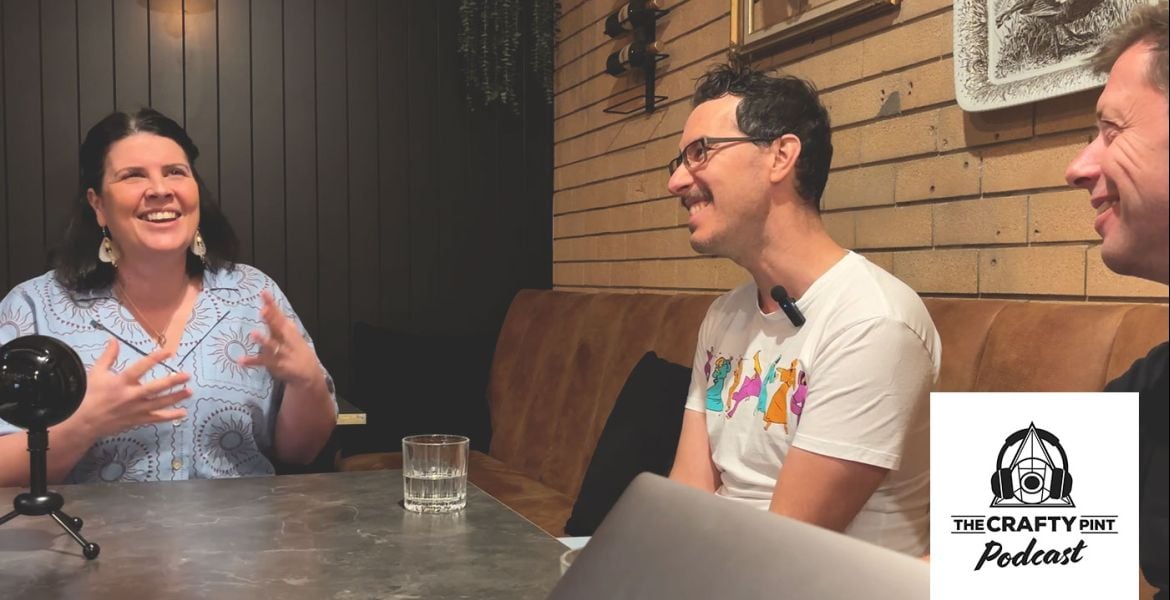It may be transparent, but for some beer lovers glass can be a dirty word. At least when it comes to packaging beer.
If you only got into craft beer in 2018 or later, cans may be pretty much all you’ve ever known. However, if you’ve been around since the Obama administration, you may remember a time when bottles were the norm, then the start of an industry-wide shift from bottles to cans, and all the debate around the pros and cons of the different vessels.*
Bottles lost the war, and tinnie loyalists will sometimes look judgmentally on a brewery that puts their beer into glass. They’ll make exceptions for the odd barrel-aged beauty, Euro-style beer, or wild ale in a fancy champagne bottle.** But you only need to glance at the fridges of your local bottleshop (or the New Beers section of The Crafty Pint) and the message is clear: craft beer comes in cans.
However, it seems some breweries didn’t get the message. Or at least, they love bottles enough that they’re happy to be the exception to the rule.
We talked to people at three breweries in three states about how they're going back to brown glass – and more importantly, why. Namely Jimmy Young, founder of Common Ground Brewing in Milton, Brisbane, Steve Finney, co-founder of FOUND. in Byford and Subiaco, WA, and Damien Martin, founder of Dangerous Ales in Milton, New South Wales.
NB Since we started putting this article together, a brewery in a fourth state has been at it too: Melbourne-based Bodriggy released a batch of their Stingray Draught in longnecks and it promptly disappeared.

Jimmy Young had been looking into a new packaging solution that would suit both beers and RTDs, so when he heard of a counter pressure bottling line available at a bargain price, he snapped it up. It wasn’t until he brought it back to Common Ground that he discovered it didn’t fit inside the brewery.***
But that wasn’t going to stop him. With his mantra of “Work harder, not smarter,” Jimmy and his crew built an extension on the front of the brewery to house the new equipment. It might not be the way others would do it, but Common Ground has never done things the same as everyone else.****
"We’ve changed the flow of our brewhouse," Jimmy says of the changes at their brewpub. "Basically, we’ll be doing all the keg filling and bottling at the lower levels so we can just get them out, which will make us more efficient than before.
"It’ll be a lot easier for us working out the front. We’ll pretty it all up out the front, too. Got a projector hooked up down the bottling line so we can watch movies while we’re doing it!"
As for the argument that cans protect beer for longer, he adds: "It’s only the real beer nerds that understand what beer does in a package product, and for our scale, it's never gonna sit around long enough to see the effects."
For the team at FOUND., a couple of years ago they decided that when they were ready to package beer they’d put their limited releases and higher margin beers into 640ml bombers.
In mid-2023, they opened their Byford brewpub but they didn’t bottle any beers. Then they bought a bottling machine at the start of 2024 but didn’t bottle any beers then either. Then they collaborated with Idle Hands to make a beer-cocktail hybrid, and this they did put into 640ml bottles… but they did it by hand, not with their bottle filler. And when they bottled their Art of Neglect wild ales, well, they did that by hand, too.

Co-FOUND.er Steve Finney told The Crafty Pint: "I just enjoy seeing how the market always changes and adapts. People are always looking for what’s new. As an industry, we’re always looking to move with the times, and looking around for inspiration. And a certain amount of inspiration comes from what’s also old.
"I actually thought we were the only ones stupid enough to go to 640ml bottles! I really did. Then to see Damo putting some out: 'Oh shit, someone else has also had this idea!'"
As for Damo – or Damien “Dangerous Damo” Martin to give his full title – here's a man who travelled the world as a pro-bodyboarder, fell in love with lager in German beer halls, studied cooking under Gordon Ramsay in London, and now heads up a brewery in a beautifully-renovated regional hotel with an upscale food and drink menu – Australia’s only brewery to score a Good Food Guide Chef’s Hat, in fact.
I guess what I’m trying to say is: Damo’s a cosmopolitan guy. But, at the end of a long day, all he wants is a tallie of lager.
Nowadays, he specifically wants a tallie of craft lager, and he figures some other people might feel the same way. That’s a good enough reason to buy a bottling line in addition to a canning line, right? Some might say it was a risky move. But Dangerous Damo’s never been one to shy away from taking a risk.
"We’re always trying to evolve. A lot of our beers, we try to keep relevant with hopping techniques and with everything else," he says. "It’d be crazy not to keep relevant with the way we market or sell our beers.
"Sometimes it’s not the best to be the first person to do it. But you see the big guys [putting beer in bottles], and they sell. If you looked at number one selling beer in Australia, I’d guarantee it comes in a glass format. So it’s not that scary. There’s a reason the big guys do it.
"I guess if you want to be more approachable, have different formats rather than pigeonhole yourself into doing cans. You need to be flexible, creative. We’re not trying to recreate the wheel. Just want to offer something so people have a craft option.
"Sometimes it’s cool to do something cool."
So, cast of characters established, let's find more about their decisions to get back on the bottle...

What beers are you putting into bottles?
Jimmy Young: Everything – moving 100 percent across to glass. We’ll start with our our core range. We actually have different people contacting us about bottling, too – other breweries. So we might do some of theirs.
Steve Finney: All of our limited releases will go into 640ml bottles.
Our main beer, Super hazy pale, we will be producing that in 375ml cans. But any small runs will be put into glass: higher ABV limited releases, big stouts, barrel-aged sours, and – dare I say it? – hazy IPAs.
How many good hazy IPAs do you get out of a longneck?
Damien Martin: Our Crispy Boi Lager into 650ml; calling it Tall Boi. We’ve been doing it for about a year. Next year we’ll be putting all our imperial stouts in bottles. Anything that’s high ABV and aged in oak will go into a format of glass.
I just think longnecks are great for both those styles of beer: a crushable hoppy lager’s good for it, and also a big one you can share. It’s a great format.
[Tall Boi isn't] trying to compete with our Crispy Boi can. That’s 355 ml; we want people to pick up a four-pack of that. This is more about someone who’s buying a carton of – I don’t know, a 24-pack of Coopers for 55 bucks – and on the way out they see a craft longneck on the bench and think: “I might try that when I get home.”
It’s a different format, different size, and resonates with different consumers.
I just think it’s something cool that we can get behind. It’s not a money-making plan. We don’t make beer for practical reasons. Our Crispy Boi lager is dry-hopped to eight grams a litre of Kiwi hops – it’s not really an economical decision!
[The Tall Bois] do sell really well, which is great. But it wasn’t driven from an economical point of view. None of our beers are. It’s more about flavour and trying to create something we’re passionate about. The money and everything else can follow through after.

What formats?
Jimmy: We’re doing 330s and tallies – at the start, probably [just the] pilsner and lager in tallies, then see how it goes. For special releases, we’ll potentially do big champagne bottles. It opens us up to do more barrel; at the moment, we’re hand-bottling and bottle carbonating [for barrel-aged beers].
We can do whatever is available. The big guys have locked up 375ml; you can only get 330, 500, 650, 750.
Why bottles?
Jimmy: The stubby, for us, is a far superior vessel for our products. Everyone still prefers to drink beer out of a bottle than a can. It feels better on your lips. But cans have been so prevalent over the last few years, everyone’s forgotten what it’s like.
We’re gonna do roadies – well, “trainies”, since we’re next to the train station, haha – and have brown paper bags to put them in. Roadies are the way of the past for us.
We’ve got the old school mentality. Our products are going to represent that, with their regal label designs. And we want to do everything old school. Old school service. Want to start doing crumbed steak.
We're de-gentrifying everything!
Steve: From one perspective, it’s kind of disrupting the market again. What is old is kind of new. Cycles come and go. We fully believe that, generally speaking, cans are the way to go for volume, but the 640ml bottle in particular has its place. It can re-carve its own market again.
When was the last time you drank beer out of a bottle? There’s a different feeling to it. The round thick glass on your lip… Will and I both still love drinking out of bottles.
And the larger format bottles still have a premium feel. There was a day when every RIS in Australia was in a 750ml crown bottle. A lot of those have disappeared into 500ml cans, and I feel that a 10% RIS in a can just lacks something. I don’t exactly know what it is.
Damo: Longnecks have got a lot of nostalgia for someone my generation – almost 40. You go for a surf or you finish work, and on the way home you grab one beer, and it’ll probably end up being a longneck. For me, it’d always be a tallie of Coopers Red.
When we started brewing and packing our beer, I always thought it’d be a great idea to have a craft version of something at the bottleshop: aimed at tradies, twelve bucks for a beer. I think there’s a big hole in the market.

What equipment have you gone with?
Jimmy: It’s an eight-head twist filler, counter pressure. It’s actually the original East Coast Canning mobile unit they used years and years ago. It was sitting in their warehouse gathering dust, so we jumped on it.
We need the counter pressure filler for our RTDs, so having the counter pressure bottling line allows us to package all of our products instead of a few. To get something equivalent in a canning line is 150, 170 grand. When you’re talking about our volumes, it’d take up to ten years to make back our money. We got ours for [way less than that].
Steve: A six-head Meheen bottling line. There’s a surplus of Meheen sitting in breweries around Australia that have been doing not a lot for a long period of time. We bought Young Henrys’ 640ml filler for a pretty good price.
Back in the day [when Steve and FOUND. head brewer Will Irving worked at Feral], we were putting a couple of million litres of Hop Hog into bottles… So from an equipment perspective, we know the Meheen really well. We know we can get quality beer through that with fairly low DO [dissolved oxygen] levels. Still a fairly low mechanical bottling line: easily run, easily fixed, easily modified.
Damo: Bought a counter pressure bottling machine – Rev 500, from NZ. Purges, fills and caps two bottles at a time.
We get a couple of hundred cases, [and the punters] chip away at it. We’ll do it all summer this year.
Are the bottleshops on board?
Jimmy: We spoke to other bottleshops; they’re not keen on bottles because of the height of them, and the shelf space. Basically just My Beer Dealer and our own [Common Ground Cellars]. But our approach is more on-premise stuff. Because it’s small batch, we don’t want stock sitting on shelves somewhere.
We more take a collaborative approach. We’ve teamed up with Jimmy Rods barbershop, and supply all their beer. Just teamed up with Barbecue Mafia – we’re doing a complete beer line for them. Fortitude Barbells, a power lifting business – we’re doing a beer for them as well. Just to bring back everything in house. Between that and the three other restaurants [we sell to], our production volume’s eaten up. Hopefully, you sell it before you make it.
Steve: Let’s face it – everybody’s moved their shelving around to accommodate smaller cans. If you’re looking for broader distribution right now, that is going to be tricky. Especially since you don’t want your bottle on the bottom shelf with mainstream longnecks.
But the right bottleshop that wants your beer will make it work. A lot of our investor base comes from bar owners, pub owners, liquor store owners. Everyone there from the more focused craft beer stores has no issues with putting our bottles on shelf.
If you start looking broader, there’d definitely be issues there from a ranging perspective. But we’re not looking to go broad at the moment. We’re staying focused.
Damo: Yeah. There’s a culture in New South Wales, and in a lot of bottleshops we deliver to, especially as it gets warmer: a bucket of ice on the counter with nothing but longnecks.

What difficulties come along with bottles?
Jimmy: The weight and storage of everything is a lot more with the bottles. Obviously we’ve got potential breakages. But because we’re doing small batch, not mass production, it’s easy.
Steve: We know we can move around a lot of cans at a cheaper price; they’re lighter. But when we’re talking our limited runs in bottles – and at the moment we don’t aspire to be outside of WA – that takes that cost of freight and logistics out of the equation a bit. With our distribution partners, moving a box is moving a box, whether it’s 16 or 30 can blocks, or 24 stubbies, or twelve 500ml bottles.
Accessibility in the materials – there’s been a little bit of a struggle there. For that 640ml bottle, the glass manufacturer had actually stopped making those bottles globally. Luckily, there’s still some floating around, and there’s a lot of copies coming around from other places. We’ve had to improvise: buy pallets back from homebrew stores, and look at friends’ breweries who have packaged 640ml in the past and ask whether they still have any bottles left.
It’s not been the easiest path. But, as an industry, we always buck the norm and do things the difficult way. That challenge is accepted, and we’ll see how we go.
Damo: When you drop bottles in the brewery, it sucks! Broken glass is a nightmare.
More weight, so there’s more of a cost on the environment when you’re shipping it around. And the bottles do come from a lot further away. Australia doesn’t have the capability to manufacture glass in that volume in the same way.
But I think aluminium’s not that much better. We need to get better at recycling. They don’t recycle glass any more because it’s cheaper to make new. Even with aluminium cans – that’s problematic too.
But that’s a different conversation, maybe…
You can listen to Steve and Will from FOUND. talking about their decision to put beer in bottles – among many other things – in Episode 007 of The Crafty Pint Podcast.
* That said, if you drink one of these straight from the bottle, those judgmental looks may come back.
** I think we’re all shocked that aluminium bottles didn’t take off. They’re the obvious solution.
*** Not the first time something like this has happened, either. A while back, Jimmy bought a horse float to turn into a mobile bar for the brewery – without first checking if his car would be able to tow such a heavy trailer. It couldn’t. He ended up buying another car as well.
**** Although apparently there's another brewery in Milton putting beer into brown stubbies. Hopefully they're not bitter about Common Ground getting in on the action. I'm sure it'll be good as gold.




















